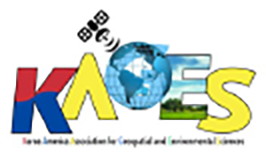Abstract
The aim of this project was to ascertain if Pictometry® estimated height could be used in lieu of field-based height estimation. Height of a light pole measured with a telescopic height pole was compared to Pictometry® hyperspatial 4-inch (10.2 centimeters) multispectral imagery estimated light pole height on the campus of Stephen F. Austin State University, Nacogdoches, Texas. Average percent agreement between light pole height and Pictometry® estimated light pole height summarized by Pictometry® image magnification factors at 100%, 125%, 150%, 200%, and 300% magnification were within 98% of light pole height with percent disagreement ranging from 1.37% to 1.90%. RMSE between light pole height and Pictometry® estimated light pole height summarized by Pictometry® image magnification factors at 100%, 125%, 150%, 200%, and 300% magnification ranged from 0.14 meters to 0.17 meters. The results of Kruskal-Wallis test indicated that Pictometry® estimated light pole heights measured at the cardinal directions of north and east were more accurate than the directions of south and west, while increasing the magnification scale did not increase light pole height accuracy significantly. Pictometry® estimated height can be used in lieu of field-based height estimation for vertical features in a landscape and has the potential to revolutionize remotely sensed height measurements. This confirms the precision and accuracy of height measurements previously found for use of Pictometry® for tree, pole and building heights, slope distance, and height measurement by unmanned aerial systems.
Recommended Citation
Unger, Daniel; Kulhavy, David; Hung, I-Kuai; and Zhang, Yanli
(2016)
"Accuracy Assessment of Pictometry® Height Measurements Stratified by Cardinal Direction and Image Magnification Factor,"
International Journal of Geospatial and Environmental Research: Vol. 3:
No.
1, Article 4.
Available at:
https://dc.uwm.edu/ijger/vol3/iss1/4

